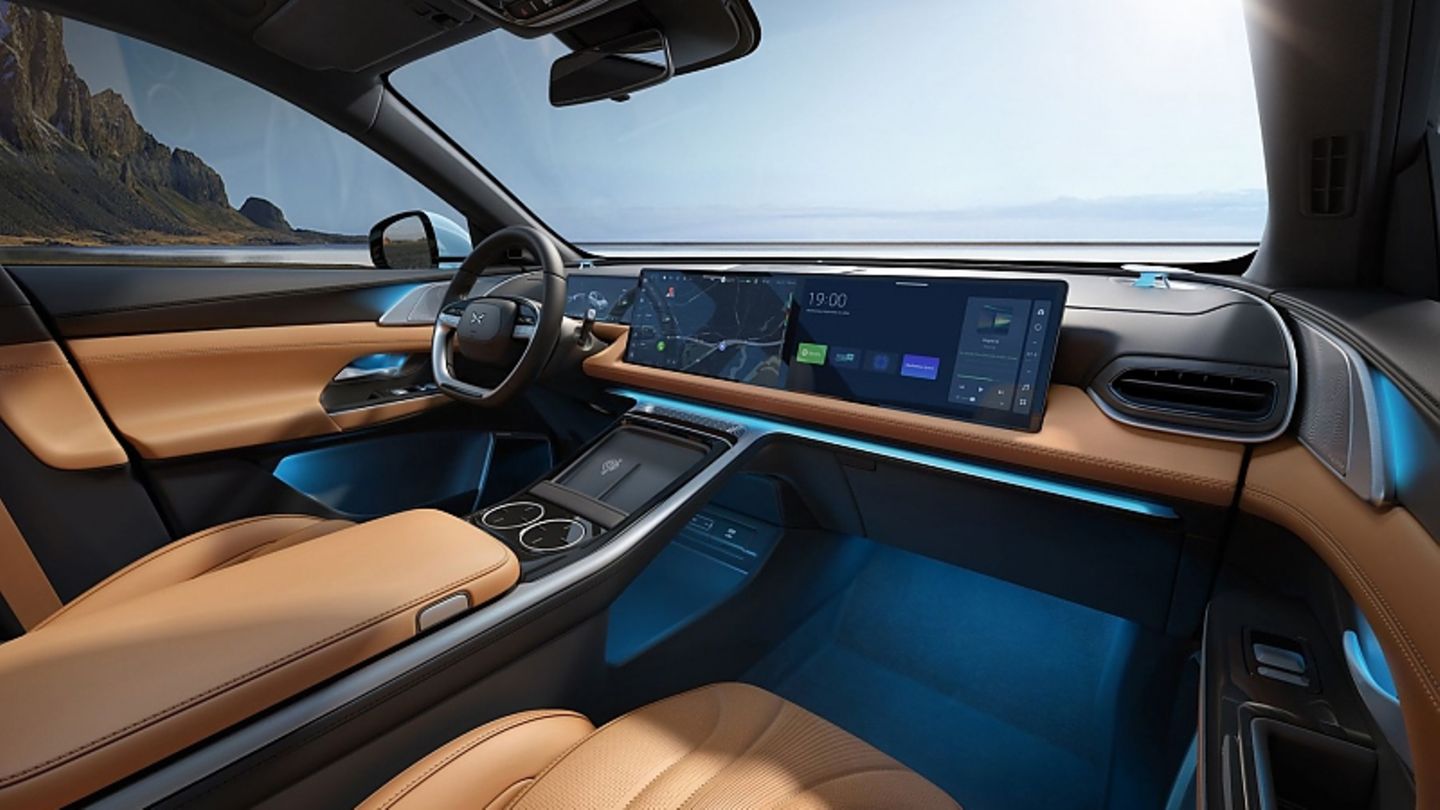VW teams up with Xpeng to build new electric cars in China that meet customer tastes. The Xpeng G9 SUV uses the platform intended for VW, competes against the Mercedes EQE SUV and the Audi Q8 e-tron and leaves a good impression on the first test drive.
Times are changing. Just a few years ago, VW models populated the streets of Chinese cities, but now the Lower Saxony car manufacturer is desperately looking for partners in the Middle Kingdom so that it can at least to some extent catch the fleeing skins. VW is losing market share in China and if this revenue continues to collapse, then the alarm bells in Wolfsburg will ring even louder than they already do. It makes sense to get Chinese allies on board in order to strengthen your own position.
Since you don’t want to get into bed with up-and-coming competitors like BYD, but on the other hand you need modern technology that is also in demand in the largest car market in the world, you had to choose your partner carefully. The choice fell on Xpeng, a car manufacturer that was only founded in 2014, but already has the P5, P7 and the G3i on the market and also satisfies VW with its self-postulated premium demands. So the Wolfsburg-based company invested around 700 million US dollars, acquired 4.99 percent of Xpeng and, above all, brought digital expertise on board. The Chinese car manufacturer is expected to contribute its expertise, particularly in networking, electronics and digitalization, to the development of two new VW mid-range models that use the X-EEA 3.0 platform.
The Xpeng 9 electric SUV is also based on this architecture. Even though Xpeng already has the next generation in its kitty with the SEPA 2.0 platform, the still modern in the last expansion stage Evo does not perform. Especially when charging, the Xpeng G9 with the 800-volt technology rolls up to the charging station and, according to the manufacturer, fills the 98 kilowatt-hour NCM batteries with a maximum charging power of 300 kW from 10 to 80 percent within 20 minutes . Xpeng specifies the maximum range of the G9 Performance as a maximum of 520 kilometers according to the WLTP cycle. The consumption should be 21.3 kWh/100 km.
The e-crossover has all-wheel drive with a system output of 405 kW / 551 hp (175 kW / 238 hp at the front and 230 kW / 313 hp and a maximum torque of 717 Newton meters. This means that the G9 reaches 100 km after 3.9 seconds /h mark and is fast at up to 200 km/h. According to Xpeng, the E-SUV should stop after 34.6 meters if you step on the brakes at 100 km/h. The value is okay, but he doesn’t tell you anything the whole story: The brakes are not easy to control. The brake pedal travels a long way before deceleration occurs. The chassis with the two-chamber air spring made a good impression on the first short test drive, even if it springs tightly in potholes and transverse joints . But this is a phenomenon that is found in many electric SUVs. After all, the Accelerator pedal characteristic. Even in sport driving mode, the power delivery is so delayed that turbo nostalgics will enjoy it.
Basically, the stilt electric vehicle is technically on par with the competition. It’s not about pure performance, which other vehicles have too, but about the chassis and infotainment. In the Xpeng G9, the occupants look at two large 14.96-inch screens and the driver looks at a slightly smaller monitor that displays the digital instruments. The infotainment is reminiscent of the entertainment industry that serves the Nio models. But this is anything but a disadvantage. The infotainment with the 3D display is state-of-the-art and wireless updates ensure that it stays that way. However, we looked in vain for a head-up display. You have to get used to the fact that almost all the buttons have disappeared. That’s why, like the Chinese competitor, the steering wheel and exterior mirrors are adjusted via the display.
You feel comfortable in the Xpeng G9. There is enough space in the 4.89 meter long SUV anyway. Despite the glass roof, we had enough headroom. The same goes for the comfortable leather seats. The workmanship contributes to the feel-good atmosphere, as do the surfaces, which pass the haptic test with flying colors. There are also little things like the two large inductive loading areas and the cup holders, which lock into the lower position and otherwise form a flat surface with the center console. The spaciousness in the interior does not come at the expense of the luggage compartment. The trunk has a capacity of 660 liters; if you fold down the backrests of the back seat, the volume increases to 1,576 liters. There is a 71 liter frunk at the front for the charging cable and other bits and bobs.
The Xpeng G9 will be available in Germany next year together with its sedan brother P7. The prices have not yet been determined. In the Netherlands, the basic version costs 57,990 euros, the performance costs 71,990 euros.
Source: Stern
I’m a recent graduate of the University of Missouri with a degree in journalism. I started working as a news reporter for 24 Hours World about two years ago, and I’ve been writing articles ever since. My main focus is automotive news, but I’ve also written about politics, lifestyle, and entertainment.




